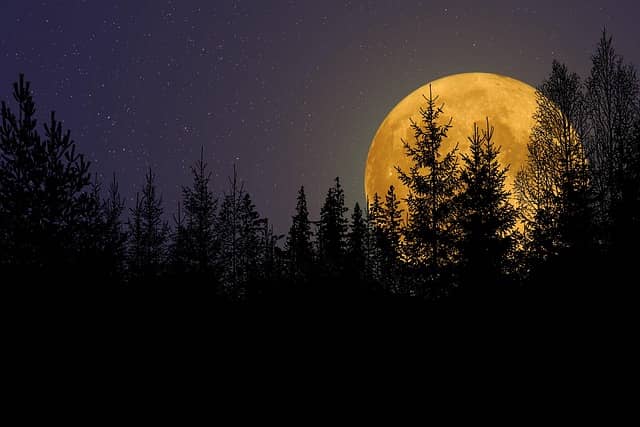What does darkness symbolize in Lord of the Flies? In William Golding’s Lord of the Flies, symbols play a key role in revealing the deeper meanings behind the boys’ experiences on the island. One of the most important and recurring symbols is darkness. Even though darkness might seem like just part of the background, it actually stands for something deeper. By looking closely at how darkness appears throughout the novel, we can better understand what it stands for and why it matters to Golding’s message about human nature.
What does darkness symbolize in Lord of the Flies?
In Lord of the Flies, darkness is a powerful symbol that stands for fear, the unknown, and the deterioration of humanity. Golding uses darkness to show how quickly civilized behavior can disappear when people are left to their own instincts.
Throughout the novel, darkness often appears at moments when the boys feel most afraid or lost. When night falls, their fears grow stronger: “He was not moved by any sense of loss, but only by a vague sense of alarm.” The darkness makes everything uncertain and brings out their deepest anxieties, especially about the mysterious “beast” they think is lurking on the island. As Golding writes, “The world, that understandable and lawful world, was slipping away.” This line marks how darkness signals not just nightfall but also the breakdown of order and humanity among the boys.
Simon’s encounter with the Lord of the Flies happens in a dark forest clearing, emphasizing how darkness is linked with evil and chaos. Golding describes Simon’s surroundings as “the candle-buds opened their wide white flowers… Their scent spilled out into the air and took possession of the island.” Yet even this beauty is swallowed by encroaching darkness, making it clear that innocence is being overtaken by savagery.
Overall, darkness in Lord of the Flies represents more than just the absence of light—it symbolizes how fear and savagery can overtake reason, leading to a loss of humanity when structure breaks down.
What are some quotes about darkness in Lord of the Flies?
Here are some memorable quotes about darkness in Lord of the Flies, along with their chapters and page numbers (please note that page numbers may vary depending on the edition, so here are commonly used versions):
1. “The world, that understandable and lawful world, was slipping away.” —Chapter 5. This quote shows how darkness is connected to the loss of order and civilization among the boys.
2. “He began to dance and his laughter became a bloodthirsty snarling. He capered toward Bill, and the mask was a thing on its own, behind which Jack hid, liberated from shame and self-consciousness.” —Chapter 4 Here, the darkness isn’t just physical but also symbolizes how evil can take over when people feel hidden or free from rules.
3. “Simon’s effort fell about him in ruins; the darkness opened up again and swallowed him.” —Chapter 8. This line describes how Simon is literally and figuratively overwhelmed by darkness as he faces his fears alone in the forest.
4. “The candle-buds opened their wide white flowers… Their scent spilled out into the air and took possession of the island… Soon the darkness was full of claws, full of the awful unknown and menace.” —Chapter 3 Golding uses this imagery to show how quickly beauty can be overtaken by fear and threat when night falls.
These quotes help illustrate how darkness in Lord of the Flies goes beyond nightfall—it represents fear, uncertainty, and the growing loss of humanity among the boys.
What symbolizes evil in Lord of the Flies?
In Lord of the Flies, the pig’s head on a stick—known as the “Lord of the Flies”—is the main symbol of evil. It represents the darkness and savagery that exist inside all humans. As it “grins” at Simon and seems to speak to him, the pig’s head shows how evil isn’t just an outside force, but something that comes from within the boys themselves.
What does night represent in Lord of the Flies?
In Lord of the Flies, night represents the boys’ descent into savagery and the breakdown of societal norms. As darkness falls, their fears and wild instincts take over, making it easier for them to forget the rules and values they once followed. Nighttime on the island often brings chaos and violence, showing how quickly order can disappear when people are left in the dark, both literally and figuratively.
What is the symbolism of the conch in Lord of the Flies?
In Lord of the Flies, the conch symbolizes unity, order, and authority among the boys. Using the conch to call meetings and let each other speak helps keep things organized and fair. As long as the conch is respected, there is a sense of civilization on the island. But when the conch loses its power, it shows that their unity and sense of order are falling apart.
What is the symbol of fear in Lord of the Flies?
In Lord of the Flies, the symbol of fear is the beast. The boys become terrified of this mysterious creature, even though it doesn’t really exist. The beast represents their growing fear and the way their imaginations turn their anxiety into something real and threatening. Through the beast, Golding shows how fear can take on a life of its own and control people’s actions.
Conclusion
In conclusion, darkness in Lord of the Flies is a powerful symbol for fear, the unknown, and the breakdown of humanity. As night falls or shadows creep in, the boys’ fears grow stronger and their sense of right and wrong begins to fade. Golding uses darkness to show how quickly order can disappear and how easily people can give in to their most basic, frightening instincts when they face things they don’t understand. Ultimately, the darkness on the island is a reminder of the darkness that can exist within us all.
